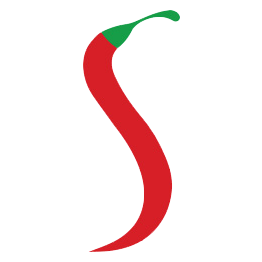
UX Research: The Never-Ending Story of a Successful Product
As a UX Designer, coming up with ideas for products or features is exciting—especially when it has the potential to differentiate a business. Floating on cloud nine and satisfied with my creative prowess, I pitch an idea but then… reality sets in.
Table of Contents
As a UX Designer, coming up with ideas for products or features is exciting—especially when it has the potential to differentiate a business. Floating on cloud nine and satisfied with my creative prowess, I pitch an idea but then… reality sets in.
No matter how strong the idea and vision, working on a completely new product or feature is challenging and often opens the door to a world of questions: Do people really need it? Will it work as they expect? Where do I start?
It’s natural to get carried away, especially when you’re excited. When that happens, sometimes people miss the bigger question:
Who are we building this product for?
The most critical step when kicking off a project is to validate whether the idea makes sense and if there is an actual need for it in the market. Beginning with UX and market research is a good way to increase the product's success. It can be a long journey, which is why it's important to have a clear idea of what you want to achieve beforehand. That way, any necessary strategic decisions can be made. See case study here.
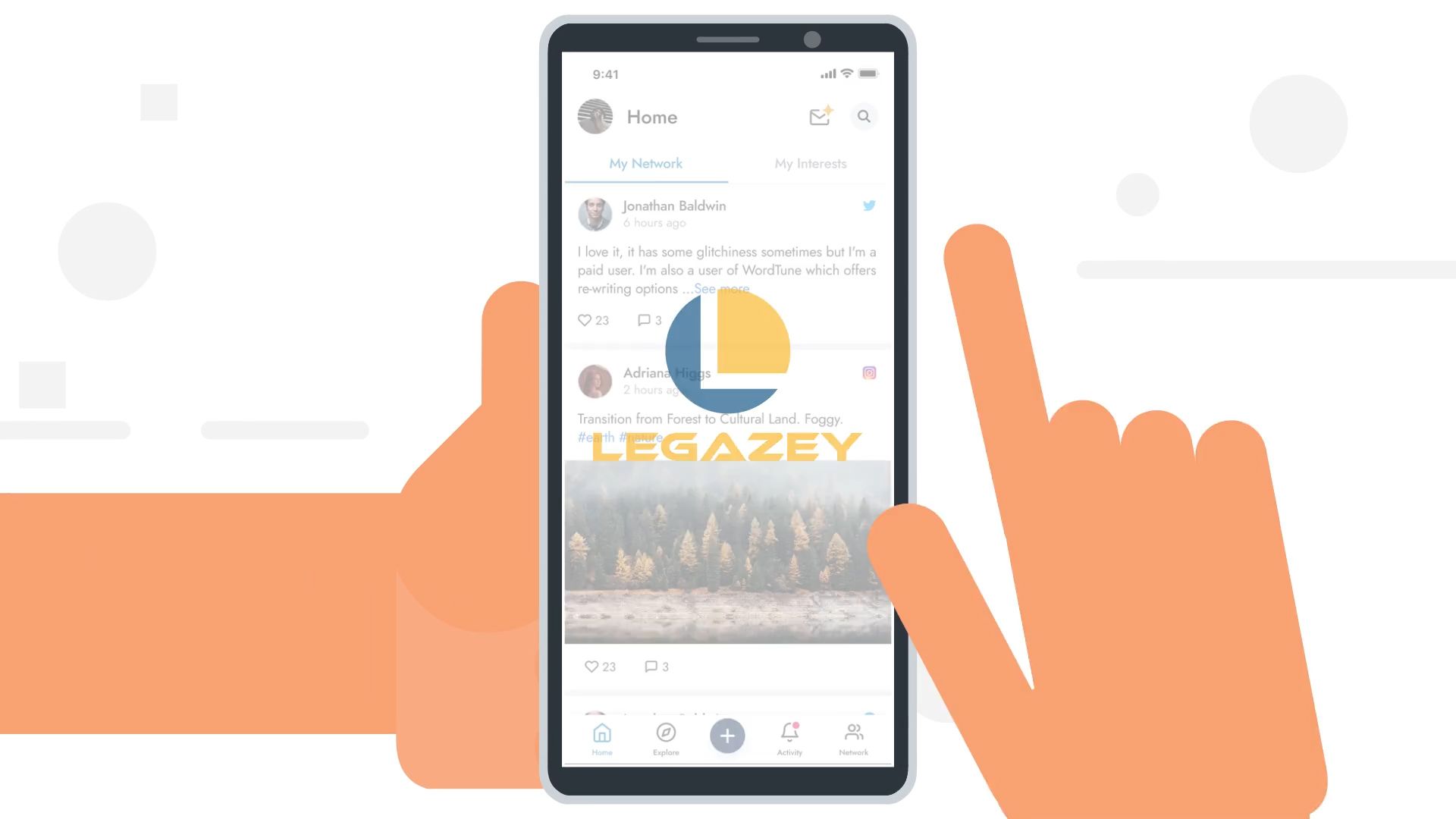
HOW WE CONDUCT UX RESEARCH AT SALSITA
Kick-off call
Whether we are starting with a new idea or revamping an existing solution, the first approach is always the same: set up an initial call with the client to help us understand their vision, short and long-term goals, and any known challenges.
If the product is already on the market, it’s important to determine users’ main pain points. Collecting information about current users and competing products, as well as any other relevant details, will point us in the right direction and help organize the research structure later on.
Stakeholder interviews
Before contacting real users, we learn more about the business. We share common goals with stakeholders, who rely on the product's success. We therefore try to include them as much as possible in the continuous and ongoing research and design process. The more active we are in our research, the more helpful data we collect. Stakeholder interviews help us explore the business side, gather requirements, and further define the product.
After the stakeholder interviews, we have a better understanding of who the intended users are and what we think they expect from the product. Any constraints or technical limitations that we might face in the future are also uncovered at this stage. It’s the optimal way to prepare for what’s coming next: interviews with real and potential users.
User interviews
Preparation is the key to conducting successful user interviews. Our researchers plan and construct the interview script, in which they lay down the basic structure and the most important questions they want to ask. The script acts only as a guide and won’t interrupt the natural flow of the conversation.
We want to make sure the interview will be pleasant and comfortable for the participants. In order to achieve that, we set up short 30-minute sessions and invite up to two researchers from our team, one to lead the discussion and one to take notes.
Interview data gives us a starting point to examine existing issues and observe recurring patterns which we analyze and organize into distinct clusters of problematic areas.
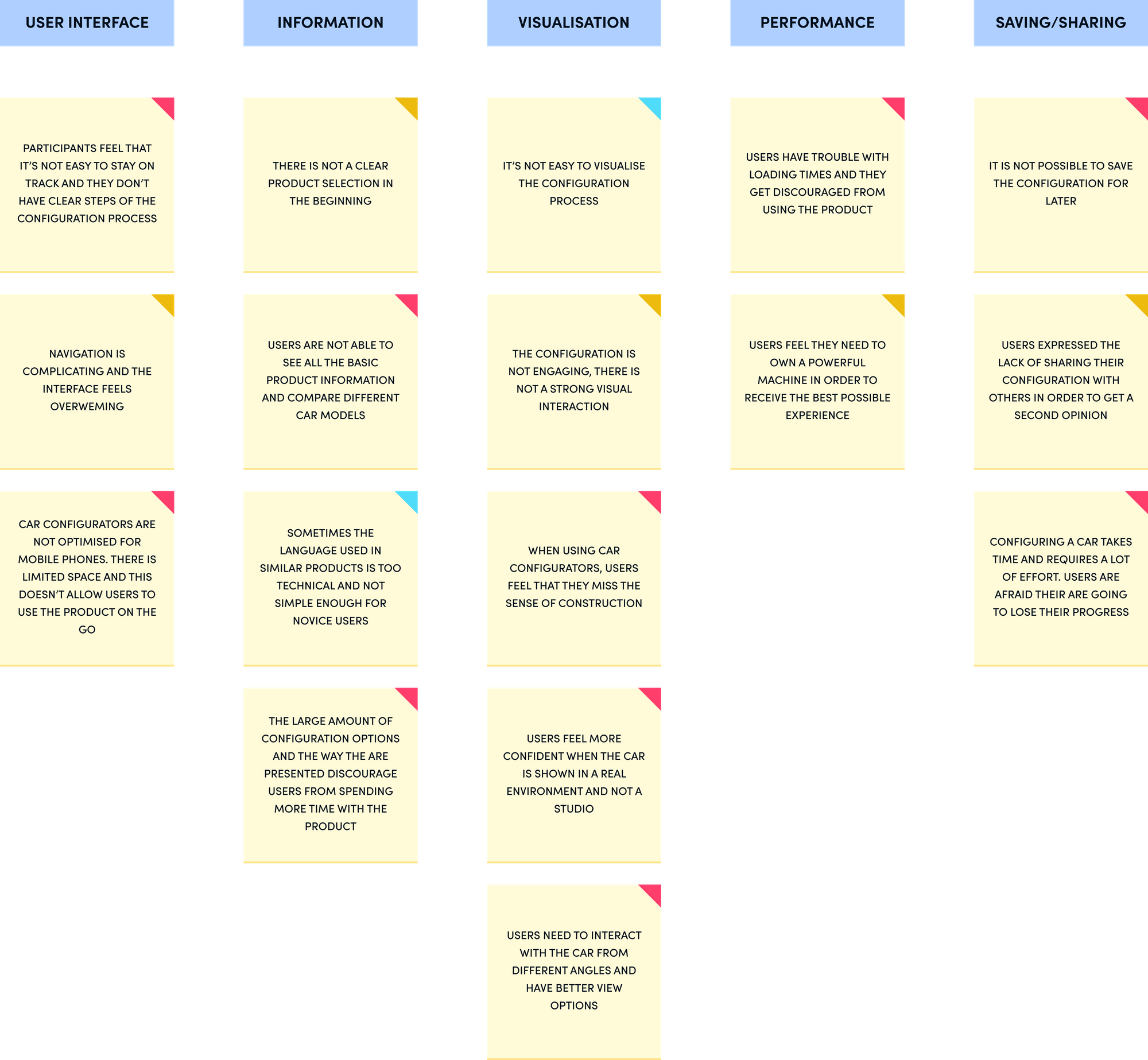
“Jobs to be done” and proto-personas
Jobs-to-be-done (JTBD) statements are completely solution-agnostic. Understanding the user’s situation when their needs arise, goal(s) to accomplish, and the path they follow to complete it allows us to dig into their needs and desired outcomes.
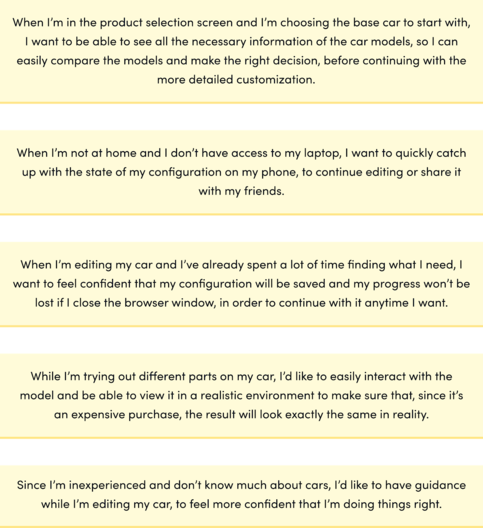
Following up the user interview results and the definition of the JTBD statements, there is enough confidence to categorize users into main groups. Proto-personas allow us to align our assumptions and turn them into more concrete examples, as seen in the example below:
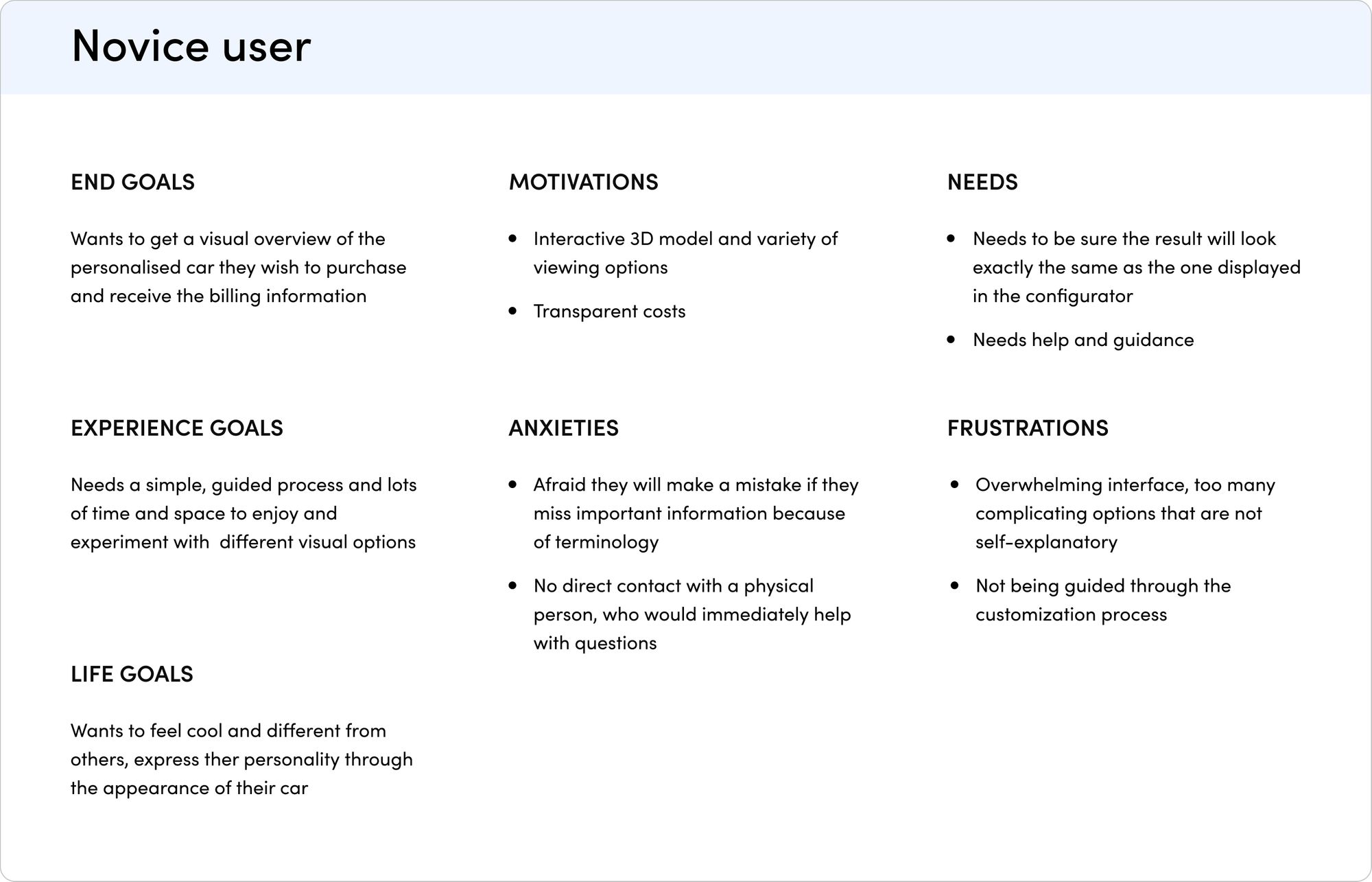
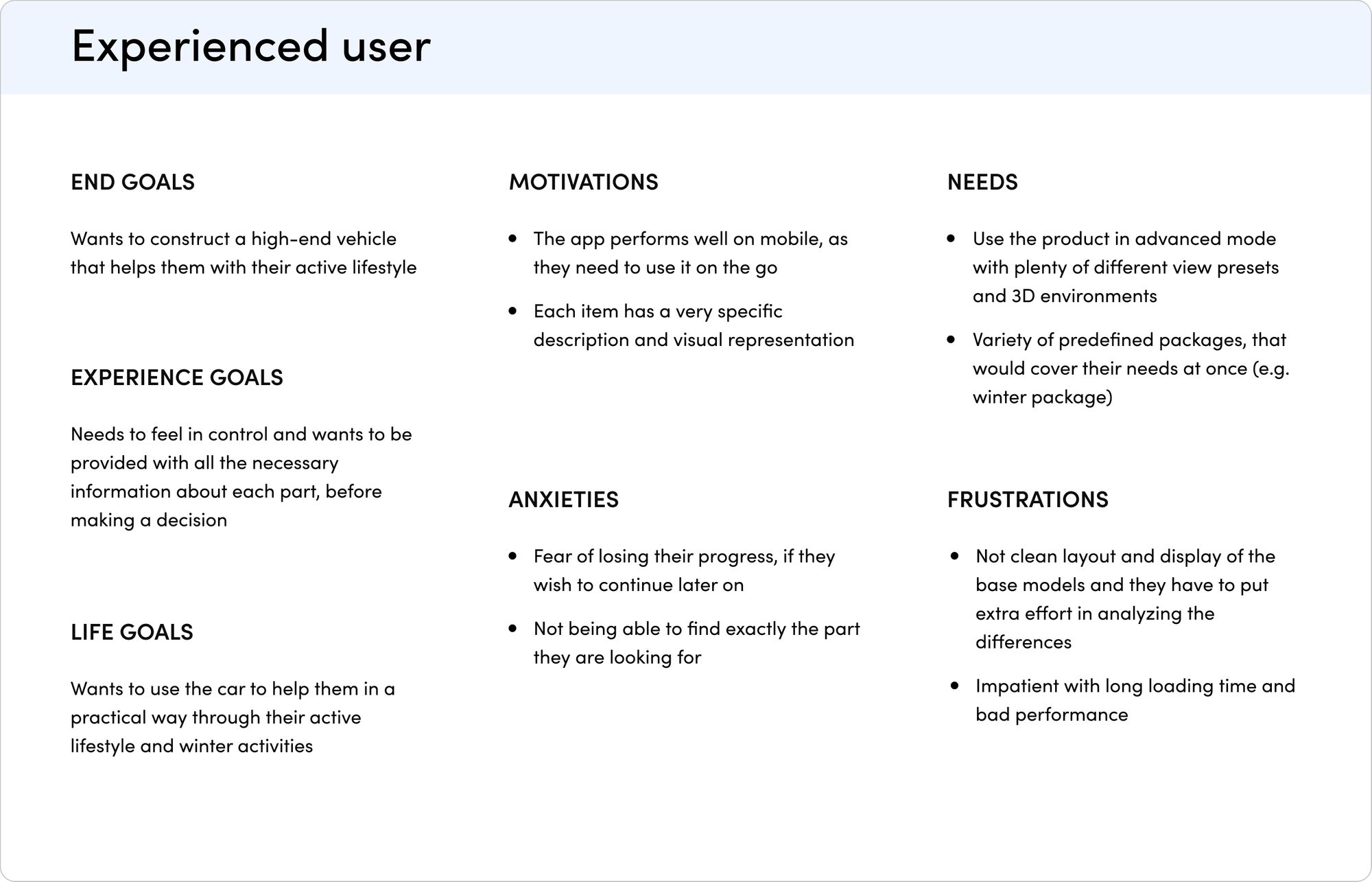
Surveys
Surveys as a tool are quite flexible and are utilized according to the needs of the project. In the beginning, surveys allow us to gather an initial round of feedback from potential users and contact information to help us connect with them for later interviews. During later phases of the user research and after the interviews, we use more focused surveys that are designed to validate our assumptions and better support future decisions.
Competitive analysis
Up to this point, we’ve collected valuable information regarding users. Now it’s time to move on and study the competition and understand how to achieve a competitive advantage in the market. First, we create a list of comparison criteria we want to evaluate. We continue by analyzing the strengths and weaknesses of direct and indirect competitors, keeping in mind how the user journeys and task flows are designed.
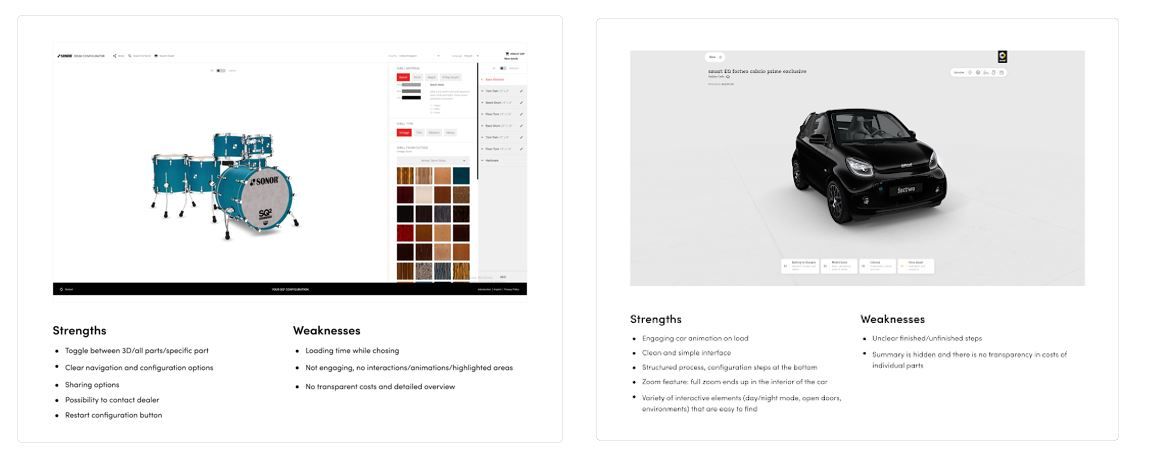

User journey mapping
At the end of the research, we sketch a simple user journey that illustrates the basic flow. This is refined and fleshed out as we continue with the discovery and design phase.
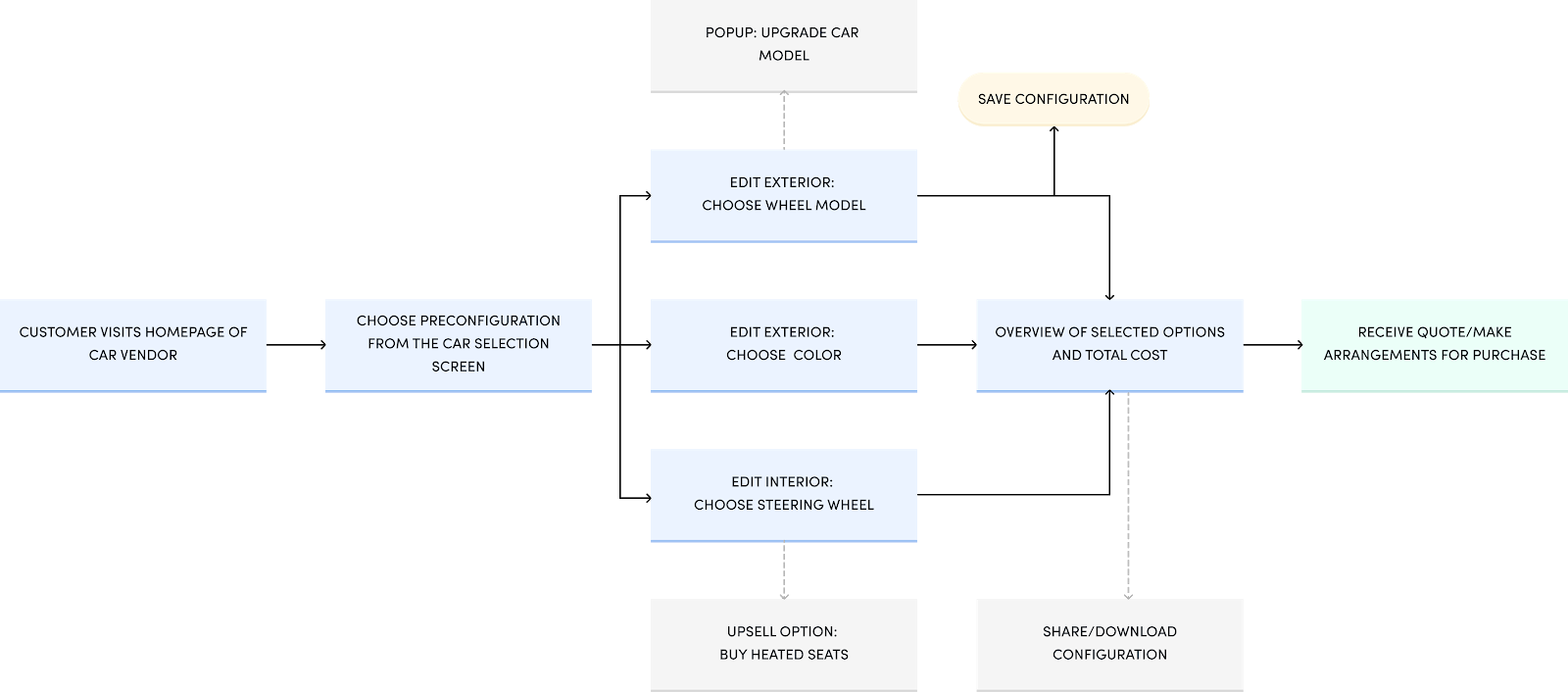
VALIDATE THE BUSINESS SIDE
During UX research we focus mostly on users and the product itself. What’s missing, though, is the connection between UX and business requirements. Our marketing experts validate whether the business model makes sense, if it will be profitable and when. They experiment with different marketing channels in order to find out how to target the audience and calculate what the likely cost of acquisition will be.
Based on the survey’s results, they determine how willing people will be to use and pay for the product, which helps to develop a pricing strategy. Read this article by Salsita Marketing Manager Razi Alakhdar to find out more about this process.
GETTING READY FOR THE DESIGN SPRINT
At the end of the initial research phase, we share our findings with our team and clients. Everyone is now more aligned and informed before starting to shape the product and coming up with concrete solutions during the Design Sprint. As a team, we want everyone to be prepared and share the same information. This way we engage in more meaningful discussions that lead to better ideas and products.
CONCLUSION
This whole journey is exciting and provides rich insights into where business needs and user experience meet to form a perfect match. As such it sets the path to achieving remarkable designs and solutions.
This isn't where the research ends, though. It's an ongoing process that continues through the development lifecycle and long after the product has been released. So settle in and enjoy the journey!

